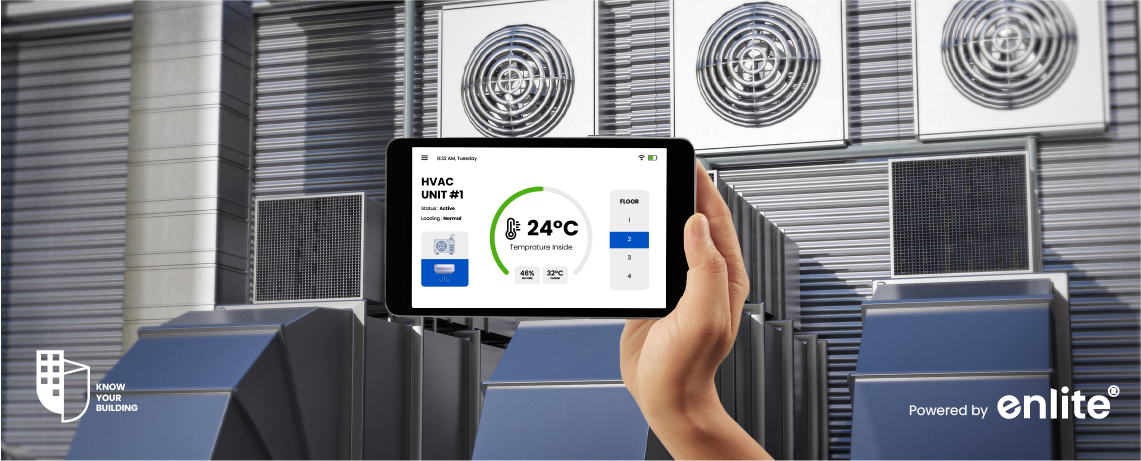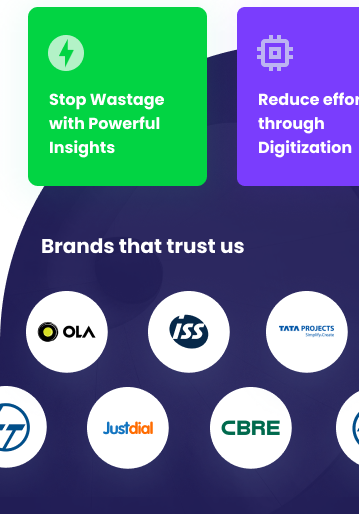Heating, Ventilation, and Air Conditioning (HVAC) systems are notorious energy hogs in commercial buildings, often accounting for 40% or more of total energy consumption. This translates to significant operational costs, a hefty carbon footprint, and a potential strain on tenant comfort if not managed effectively. Fortunately, smart Building Management Systems (BMS) are revolutionizing HVAC optimization, offering a path to dramatically improved efficiency, reduced expenses, and enhanced occupant well-being.
This blog post dives into how smart BMS solutions are transforming HVAC management, creating a win-win for building owners, occupants, and the environment.
The Challenges of Traditional HVAC Management
Before smart BMS, managing HVAC systems often involved:
- Manual Adjustments: Relying on manual thermostats and on-site personnel to adjust settings, leading to inconsistencies and inefficiencies.
- Fixed Schedules: Operating on pre-set schedules that didn’t adapt to fluctuating occupancy or weather conditions.
- Limited Visibility: Lack of real-time data on system performance, making it difficult to identify problems or areas for improvement.
- Reactive Maintenance: Addressing issues only after they arose, leading to costly repairs and potential downtime.
- Energy Waste: Overcooling or overheating spaces, wasting energy and increasing costs.
How Smart BMS Optimizes HVAC Systems
A smart BMS acts as the intelligent brain of an HVAC system, providing sophisticated monitoring, control, and automation capabilities. Here’s how it works:
Data Collection and Analysis
- IoT Sensors: A network of sensors throughout the building collects real-time data on temperature, humidity, occupancy, CO2 levels, and even external weather conditions.
- Centralized Monitoring: The BMS aggregates this data, providing a comprehensive view of HVAC performance on a single dashboard.
- Data Analytics: Advanced algorithms analyze the data to identify patterns, trends, and anomalies, revealing opportunities for optimization.
Automated Control and Optimization
- Demand-Based Ventilation: The BMS adjusts ventilation rates based on occupancy levels, ensuring fresh air is supplied only when and where needed, avoiding unnecessary energy consumption.
- Predictive Optimization: Using historical data and weather forecasts, the BMS can predict future heating or cooling needs and adjust system settings proactively.
- Optimal Start/Stop: The BMS calculates the optimal time to start and stop the HVAC system to achieve desired temperatures at the beginning of occupancy, minimizing energy waste.
- Zoned Control: The building can be divided into zones, each with its own temperature setpoints, allowing for customized comfort and energy savings in unoccupied areas.
- Dynamic Setpoint Adjustments: The BMS can automatically adjust temperature setpoints based on occupancy, time of day, and external conditions. For example, it might slightly raise the temperature in unoccupied zones or during non-business hours.
Fault Detection and Predictive Maintenance
- Real-time Alerts: The BMS immediately notifies building managers of any equipment malfunctions, deviations from setpoints, or performance issues.
- Predictive Maintenance: By analyzing historical data and identifying patterns, the BMS can predict potential equipment failures, allowing for proactive maintenance and preventing costly breakdowns.
- Remote Diagnostics: Technicians can often diagnose and even resolve some issues remotely, reducing downtime and service costs.
Integration and Interoperability
- HVAC Equipment Integration: The BMS seamlessly integrates with various HVAC components, including chillers, boilers, air handling units, and variable air volume (VAV) boxes.
- Integration with Other Building Systems: The BMS can communicate with other building systems, such as lighting and security, to further enhance energy efficiency and occupant comfort. For example, lighting can be dimmed or turned off in unoccupied zones controlled by the HVAC system.
Reporting and Visualization
- Customizable Dashboards: BMS platforms offer interactive dashboards that visualize key performance indicators (KPIs), energy consumption trends, and system status.
- Automated Reporting: The BMS can generate automated reports on energy usage, cost savings, and system performance, providing valuable insights for building owners and managers.
- Benchmarking: Comparing performance data against industry benchmarks or other buildings in a portfolio helps identify areas for further improvement.
Benefits of HVAC Optimization with Smart BMS
- Significant Energy Savings: Reductions in energy consumption of 10-30% or more are commonly achieved.
- Lower Operating Costs: Reduced energy bills and maintenance expenses lead to substantial cost savings.
- Improved Occupant Comfort: Precise temperature control and optimized ventilation create a more comfortable and productive indoor environment.
- Extended Equipment Lifespan: Predictive maintenance and optimized operation reduce wear and tear on HVAC equipment, extending its lifespan.
- Reduced Carbon Footprint: Lower energy consumption directly translates to a smaller environmental impact.
- Enhanced Building Value: Energy-efficient buildings with smart HVAC systems are more attractive to tenants and investors.
- Simplified Management: Automated control and remote monitoring streamline HVAC management, freeing up building staff for other tasks.
- Compliance: Helps with building codes and regulations.
The Future of Smart HVAC Management
The integration of smart BMS with HVAC systems is continuously evolving, with future trends including:
- Artificial Intelligence (AI) and Machine Learning (ML): AI and ML will enable even more sophisticated optimization, predicting future needs with greater accuracy and autonomously adjusting system settings.
- Integration with Smart Grids: HVAC systems will become more responsive to grid conditions, participating in demand response programs and contributing to grid stability.
- Focus on Indoor Air Quality (IAQ): BMS will play an increasingly important role in monitoring and managing IAQ, ensuring a healthy and safe indoor environment.
- Cloud-Based BMS: Cloud platforms offer scalability, remote access, and enhanced data analytics capabilities.
Conclusion
Optimizing HVAC systems with smart BMS solutions is no longer a luxury; it’s a necessity for modern commercial buildings. By embracing this technology, building owners and operators can achieve significant cost savings, improve occupant comfort, reduce their environmental impact, and create more valuable and sustainable properties. It’s a smart investment that pays off in the short and long term, creating a cooler, cleaner, and more cost-effective future for commercial real estate.














